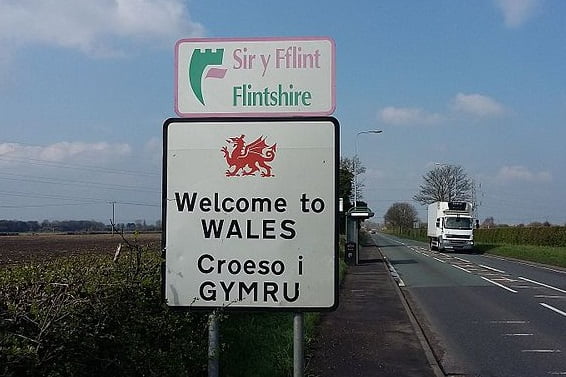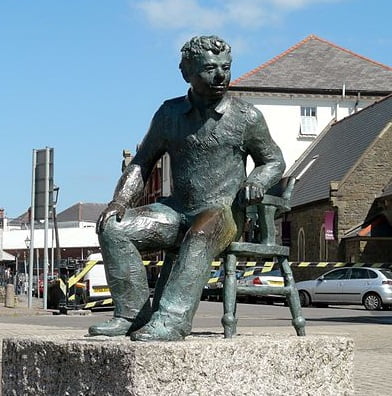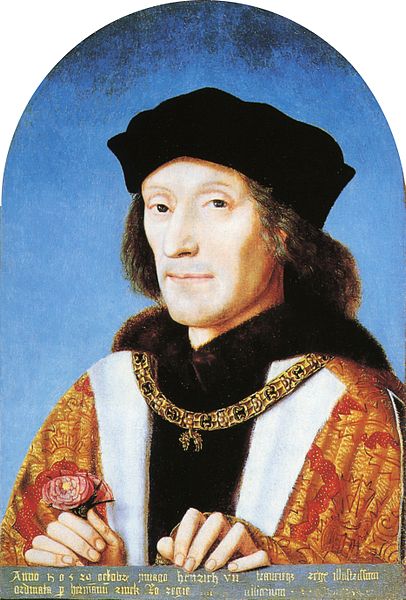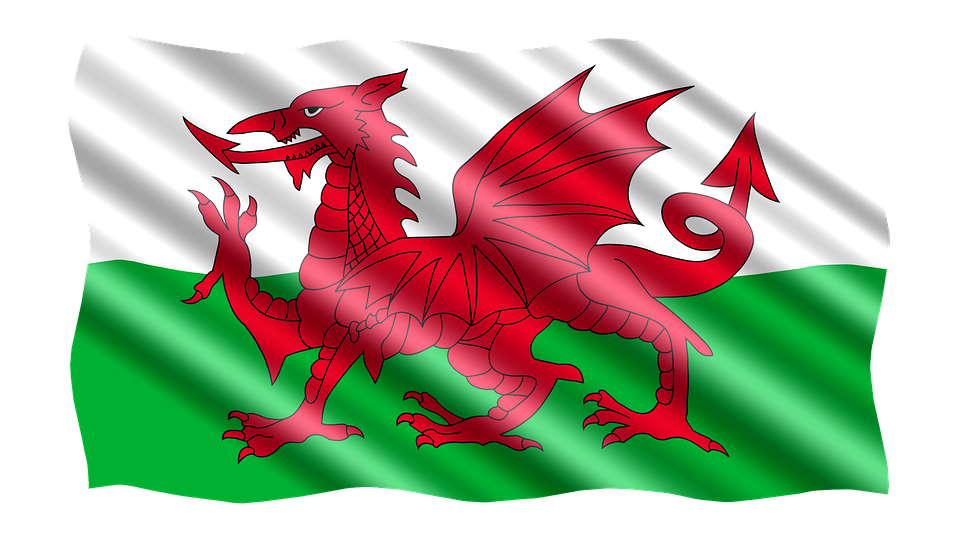 St David’s Day falls on 1st March each year. This special day has been celebrated since the 12th century and although it is not a national holiday in the UK, it is regularly marked with celebrations.
St David’s Day falls on 1st March each year. This special day has been celebrated since the 12th century and although it is not a national holiday in the UK, it is regularly marked with celebrations.
Saint David is the patron saint of Wales and the Feast of St David commemorates the day he died in 589 AD. On Saint David’s Day it is traditional to eat Welsh foods and celebrate Welsh culture.
This is an ideal time to explore all things Welsh in the EFL classroom, introduce students to Welsh culture and learn some new vocabulary. Join us in exploring the Welsh flag, national symbols, language, accent, foods and traditions for a fun St David’s Day EFL lesson!
The Patron Saint of Wales
The patron saint of Wales is Saint David. He was born into an aristocratic family in south west Wales and founded a Celtic monastic community in Glynn Rhosyn, Pembrokeshire, where St David’s Cathedral now stands. His influence was great as a Celtic Christian and his teachings spread far and wide.
Saint David is thought to have died on 1st March 589 AD. St David’s Day is not a public holiday in the UK, although there is strong support for 1st March to become a national holiday in Wales.
Symbols of Wales
There are many symbols associated with Wales, the most famous of which are the red dragon, the leek and the daffodil.
Other symbols of Wales include the red kite, the Welsh harp (which has three strings instead of one) and the Prince of Wales’ feathers (three white feathers encircled with a coronet and inscribed with the German words Ich Dien, meaning ‘I serve’).
The Welsh lovespoon is another symbol associated with Wales, which is a traditional hand-crafted spoon. This wooden token is created by a suitor to give his sweetheart‘s family to prove the level of his crafting skills!
The Leek
The leek is one of the most famous symbols of Wales. According to legend, a Welsh king ordered his troops to wear a leek attached to their helmets for identification purposes during an important battle against the Saxons, which took place in a leek field.
The Tudor guards are also said to have worn the root vegetable. In the Shakespeare play Henry V, the Captain Fluellen comments that Welsh soldiers took part in a battle ‘in a garden where leeks did grow’.
To mark this legend, the leek is a symbol of Wales and people wear leeks on St David’s Day.
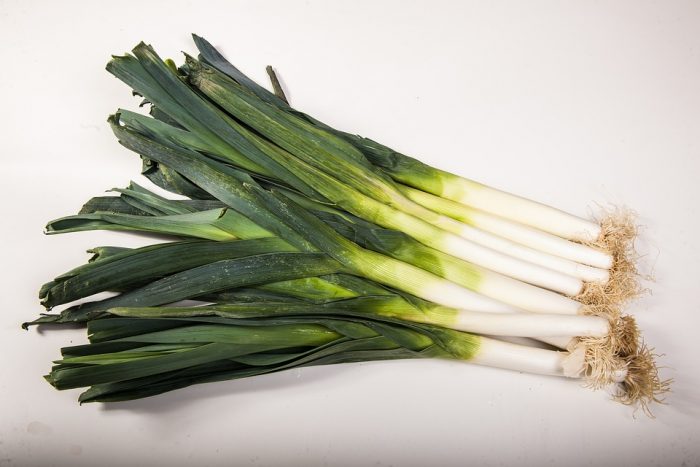
The leek is a symbol of Wales – image source
The Daffodil
The daffodil is another symbol of Wales and is often worn on the lapel on St David’s Day. This flower is also known as ‘Peter’s Leek’ with the leek being the original national emblem of Wales.
‘Cenhinen’ translates as ‘leek’ in Welsh and ‘Cenhinen Pedr’ is the Welsh for Daffodil, so over time these symbols became conflated and they are now both recognised as Welsh emblems.
The daffodil is also in bloom in early spring so these lovely yellow flowers will be prevalent in gardens and fields on March 1st, St David’s Day.

Beautiful spring daffodils – image source
The Flag of Wales – the Red Dragon
The Red Dragon is the flag of Wales (in Welsh the flag is called ‘Y Ddraig Goch’). This has been the official flag since 1959 but the dragon has been associated with Wales for many centuries.
Many believe that the Red Dragon has been used as a symbol of Wales since King Arthur, who fought for Britain against the Saxon invaders (who were symbolised by a white dragon).
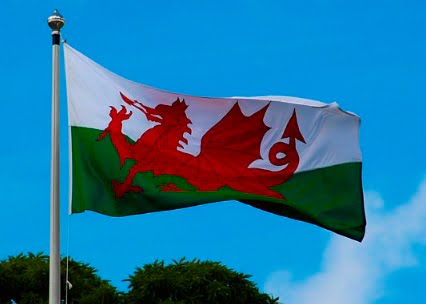
The flag of Wales – image source
The green and white halves in the Welsh flag symbolise the House of Tudor (the Royal house of the 15th century, including Henry VIII and Elizabeth I), which was of Welsh origin.
The Welsh Language and the Welsh Accent
The phrase ‘Saint David’s Day’ when written in Welsh is ‘Dydd Gŵyl Dewi’
The language of Welsh is spoken by ¾ of a million people. Most of these Welsh speakers live in Wales but there are also some in England, Canada, the USA and even Argentina.
Most Welsh speakers also speak English and Welsh is normally used as the language of rural Wales, rather than in the larger cities.
In Wales you will see bilingual road signs using both Welsh and English. There are a number of Welsh television shows and a Welsh television channel called S4C.
There are many different Welsh accents, just as there are different English and Scottish accents. In the south, the Welsh accent is influenced by the south-west accents of England, while in the north the Welsh accent is influenced by Merseyside. This means you might hear a touch of Scouse (the Liverpool accent) in north Wales!
The Welsh accent is often thought of as having a ‘sing-song’ quality with more variation in pitch than with a standard English accent.
The vowels are also normally stretched out with a Welsh accent and held for a longer time than when speaking in an English RP accent. For example, the word ‘vowel’ is pronounced with one syllable in English, but would often be pronounced with two syllables in a Welsh accent (‘vow-el’).
The letter ‘i’ is pronounced more like an ‘e’ in a Welsh accent. For example, the word ‘bit’ would sound like ‘bet’, and the word ‘going’ would sound like ‘go-en’. A typical welsh accent would also not pronounce the starting ‘h’ of a word. For example, ‘have’ would be ‘ave’.
Welsh also has a rhotic element, which means the letter ‘r’ can often be heard when it appears in spelling, unlike in standard English. The ‘r’ sound is often rolled slightly, in a similar way to the Scottish accent.
Sometimes Welsh people will repeat the verb at the end of the sentence. For example: ‘I am very hungry, I am’.
Welsh Food and Culinary Traditions
Wales is known for its wonderful lamb. The mountains of Wales are highly suited to sheep farming, which is why this meat is associated with the country. There are now more than 11 million sheep in Wales.
Wales has a number of traditional foods. Cawl is often thought of as the Welsh national dish. This is a slow-cooked meat and vegetable broth, often containing root vegetables and lamb or beef.
Welsh rarebit is another famous food, which is similar to cheese on toast and dates back to the 18th century.
Glamorgan sausage is a skinless sausage made of cheese and leek or spring onion, which is rolled into a sausage shape and fried. Laverbread is pureed seaweed served with breakfast.
Welsh cakes are small, round spiced cakes containing raisins, sultanas and currants, and Bara brith is like tea bread and similar to Welsh cakes.
Welsh pancakes are called Crempog’s or ffroes and are considerably thicker than traditional English pancakes, looking more like Scotch pancakes. The Welsh variety is often layered to form a tall cake tower.
Dylan Thomas
Dylan Thomas is a famous Welsh writer and poet, born in 1914. Some of his most loved works include Do not go gentle into that good night and Under Milk Wood.
Although born in Wales, Thomas wrote exclusively in the English language and is acknowledged as one of the most important Welsh poets of the 20th century. He is known for his imaginative use of words and imagery.
On St David’s Day, many people like to celebrate quietly at home by reading Dylan Thomas’ poetry. Ironically, Thomas’ own lifestyle was know to be rather more boisterous, fraught and disorderly, with alcohol binges playing a regular part. It is said that his last words were: “I’ve had eighteen straight whiskies. I think that’s the record”.
The Political History of Wales
Wales (or Cymru in Welsh) has a fascinating history. The nation was first settled by the Celts around 1000 BC. The first recorded history of Wales begins with the Romans around 48 AD. At this time, people spoke Brythonic, which is the language that would evolve into Welsh.
The boundary between Wales and England was created in 784 with a large dyke built by Offa the King of Mercia.
The Norman Conquest of 1066 saw the people of Wales rise up and drive the Normans out in 1100. The first festival of music and poetry was held at Cardigan Castle by Lord Rhys in 1176 – this became known as the first Eisteddfod.
In the 13th century, Edward I built many castle across Wales. In 1400, Owain Glyndwr established an independent Wales and he soon declared himself the Prince of Wales (the position now held by Prince Charles).
The Tudor dynasty has its origins in Wales and this means Welsh nobility were integrated into English public life on the crowning of Henry Tudor in 1485. In 1536, Wales became united with England politically by the first Act of Union.
In 1801, Merthyr Tydfil was the largest city in Wales with 7,705 inhabitants, but when Bute Dock was built in 1839, Cardiff expanded and quickly became the biggest and most important city in Wales.
By 1905 Cardiff had experienced a seven-fold increase in population in just 50 years and in 1955 Cardiff was officially declared the capital of Wales.
In 1997, the Welsh public voted to establish the National Assembly for Wales and the Queen opened the Assembly officially in 1999, making Wales a separate constitutional entity within the UK.
Plaid Cymru (pronounced ‘Plide Come-Ree’) is a political party in Wales advocating for Welsh independence from the United Kingdom. The party was formed in 1925 and won its first seat in the UK Parliament in 1966. This party is a social democratic, left-wing party.
St David’s Day Celebrations and Traditions
Saint David’s Day is celebrated in Wales with parades with the Cardiff St David’s Day parade being the largest and most famous. This parade is a celebration of Welsh heritage and culture and does not have a military element.
Celebrations are often held at public venues such as pubs and clubs. These can include concerts, parades and food festivals featuring traditional Welsh food. You can also find musical entertainment and other performances, such as dancing and drama.
Schools often take part in fund raising, while many people participate in sporting events and cultural activities throughout Wales to mark the special day.
It is not only in Wales that St David’s Day festivities are popular. Disneyland Paris celebrates the day with Welsh-themed activities, including fireworks and Welsh costume.
Washington D.C. holds its own celebrations and Los Angeles has a St David’s Day festival including a Celtic market and concerts. There is also an ‘eisteddfod’, which is a Welsh cultural celebration of music, literature and performance.
The National Eisteddford of Wales is held during the first week of August every year, celebrating the culture and language of Wales. The festival is held in a different place each year and alternates between north and south Wales, attracting over 150,000 visitors.
St David’s Day in the EFL Classroom
Incorporating St David’s Day into the EFL classroom can include discussing Welsh culture and the various symbols and traditions associated with Wales.
An EFL lesson could explore the legend of the Welsh Dragon and discuss the foods and other symbols, such as the leek and daffodil. Perhaps the students could design their own lovespoon!
Teachers can let students complete a gap-fill exercise after having presented the vocabulary and ideas. It is a good idea to talk about the traditional celebrations, Welsh symbols and a brief history of St David.
You can use videos or pictures of the National Eisteddford of Wales or other celebrations with music, dance and poetry.
For more advanced students, you could have conversations in groups to discuss different facets of Welsh culture.
Another idea is to use St David’s Day as a spring board to discuss national holidays in general, whether they are a good idea for a country and whether St David’s Day should be a national holiday like St Andrew’s Day.
Share your thoughts on St David’s Day
Have you ever visited Wales? What are your favourite Welsh cities and landmarks?
Who is the patron saint of your own native country?
Welsh readers, how do you celebrate St David’s Day?
Have you ever been to a St David’s Day festival, celebration or even the official Eisteddfod?
We’d love to hear your thoughts in the comments!
Attributions
- Welsh Lovespoon by Jongleur100 [Public domain], via Wikimedia Commons
- The border between England and Wales (Chester and Sealand, Flintshire, Wales). March 2017. Llywelyn2000 [CC BY-SA 4.0], via Wikimedia Commons
- Crempog (Welsh pancakes) served in a stack with butter by FruitMonkey [CC BY-SA 4.0], via Wikimedia Commons
- Statue of Dylan Thomas in Swansea by Ham [CC BY-SA 4.0], via Wikimedia Commons
- Portrait of Henry VII of England (1457-1509), Unknown Netherlandish artist / (by Michel Sittow), National Portrait Gallery [Public domain], via Wikimedia Commons
- Urdd National Eisteddfod 2017, Bridgend – 29 May – Ensemble competition – Harpists, wide by FruitMonkey [CC BY-SA 4.0], via Wikimedia Commons


